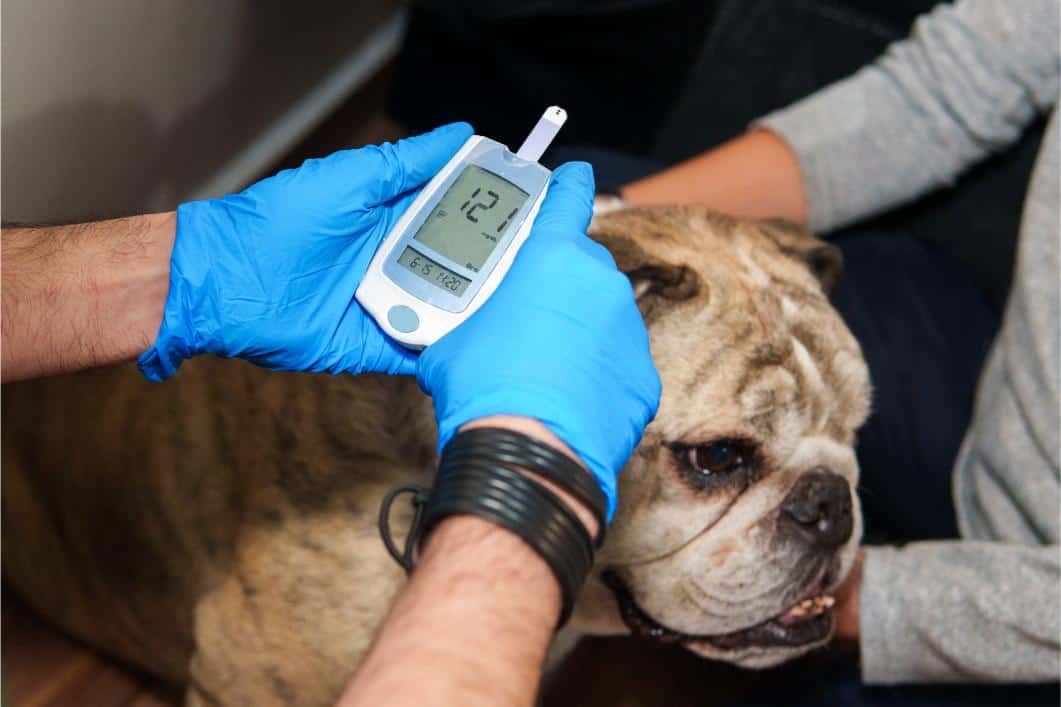November is National Pet Diabetes Month

November isn’t just about pumpkin pie and cozy sweaters—it’s also National Pet Diabetes Month. At Englishtown Vet MD, we use this time to raise awareness about this common but manageable condition that affects both cats and dogs. Understanding the signs, getting an early diagnosis, and following a care plan can help your pet live a long, happy life.
What Is Pet Diabetes?
Pet diabetes occurs when your cat or dog’s body doesn’t produce enough insulin or can’t use insulin effectively. Without insulin to help regulate blood sugar, glucose builds up in the bloodstream. Over time, this can cause serious health problems if left untreated.
While any pet can develop diabetes, it’s more common in middle-aged to older animals, overweight pets, and certain breeds. Early diagnosis and consistent management are key to keeping your furry friend healthy.
Common Signs To Watch For
Spotting diabetes early can make a huge difference in your pet’s prognosis. Keep an eye out for:
- Excessive thirst: Drinking more water than usual, often paired with more frequent urination
- Weight loss: Losing weight despite eating the same or even more food
- Cloudy eyes: Especially in dogs, diabetes can lead to cataracts, which cause cloudiness in the eyes
- Poor coat condition: Fur that looks dull, thin, or unkempt may be a warning sign of underlying illness
If you notice one or more of these symptoms, don’t wait to see if they go away on their own. Early veterinary evaluation gives your pet the best chance for a healthy outcome.
How Is Pet Diabetes Diagnosed?
Your veterinarian will begin with a thorough physical exam and then run diagnostic tests. This typically includes bloodwork to measure glucose levels and a urinalysis to check for sugar in the urine. In some cases, additional tests help rule out other conditions with similar symptoms.
Because other illnesses can mimic diabetes, it’s important to get a professional diagnosis rather than assuming your pet’s symptoms point to one condition.
Managing Diabetes in Pets
While a diabetes diagnosis may sound scary, many pets respond well to treatment and enjoy a good quality of life for years. Your veterinarian will tailor a management plan for your pet, which may include:
- Insulin therapy: Most diabetic pets need daily insulin injections to regulate blood sugar.
- Dietary adjustments: Feeding a consistent, balanced diet helps keep glucose levels steady.
- Regular monitoring: Routine checkups, blood tests, and at-home monitoring keep treatment on track.
- Weight management: Achieving and maintaining a healthy weight improves overall health and can make diabetes easier to control.
With consistent care and close communication with your veterinary team, your pet can still enjoy walks, playtime, and plenty of snuggles.
Can Pet Diabetes Be Prevented?
While not all cases are preventable, healthy lifestyle choices can lower your pet’s risk. Keep your cat or dog at a healthy weight, feed a high-quality diet, and schedule regular wellness exams to catch problems early. Even if your pet develops diabetes, staying proactive will make managing it much easier.
Let’s Keep Your Pet Healthy
National Pet Diabetes Month is the perfect reminder to stay alert for changes in your pet’s behavior, appetite, and appearance. If you’ve noticed excessive thirst, weight loss, cloudy eyes, poor coat condition, or anything else unusual, the team at Englishtown Vet MD is here to help. Schedule a wellness visit today by calling (732) 786-8877, because early care means more happy, healthy years with your best friend.
